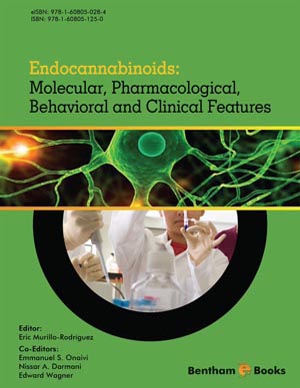Abstract
Epilepsy is a chronic, progressive, neurological disorder affecting ~0.5-1% of the population for which there is no cure. Furthermore, efficacious seizure suppression is yet to be achieved for all patients; ~35% of people with epilepsy (PWE) have seizures pharmacoresistant to existing drugs. In this regard, the endocannabinoid system (ECS) is an attractive therapeutic target as it can limit synaptic transmission to oppose hyperexcitability in addition to central cannabinoid type-2 receptor (CB2R) modulation potentially limiting neuronal death associated with epilepsy. Postsynaptic endocannabinoid (eCB) synthesis is stimulated by excitatory neurotransmission, eCBs then act retrogradely via presynaptic cannabinoid type-1 receptors (CB1R) to suppress subsequent excitatory (glutamatergic) and inhibitory (GABAergic) synaptic activity close to the synthetic locus. Thus, eCBs can limit excessive excitation but also hinder inhibitory processes such that their effects on epileptic foci and the spread of seizure activity is dependent on the relative proportions of excitatory and inhibitory synapses, and their organisation into local and global circuits within the CNS. Cannabis has a history of antiepileptic use that continues to the present day in medical marijuana programmes, and CB1R receptor agonism, either by medical marijuana, pure Δ9-tetrahydrocannabinol (Δ9-THC) or synthetic CB1R ligands, can be anticonvulsant in humans and in in vitro and in vivo seizure models, but paradoxically can cause seizures in healthy rodents. Furthermore, it is clear that other cannabis constituents are anti-epileptic, and, whilst the mechanisms by which they act remain undetermined, they certainly extend beyond ECS modulation. Moreover, whilst CB1R agonism can control seizures in some patients and many animal seizure models, it is unlikely to represent a widely exploitable target for seizure control due to its psychoactive sequelae. Conversely, many non-Δ9-THC plant cannabinoids are inactive at CB1R or CB2R at therapeutically relevant concentrations and a subset of these (e.g. cannabidiol) exert significant anticonvulsant effects in numerous animal models of seizure at clinically promising doses.
Keywords: Cannabis, endocannabinoids, epilepsy, seizures, tetrahydrocannabinol, cannabidiol, cannabidavarin, tetrahydrocannabivarin, drug resistance, 2- arachidonoyl glycerol, anandamide, hyperexcitability, pharmacology, marijuana.






















